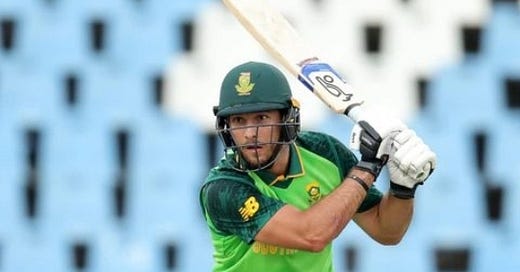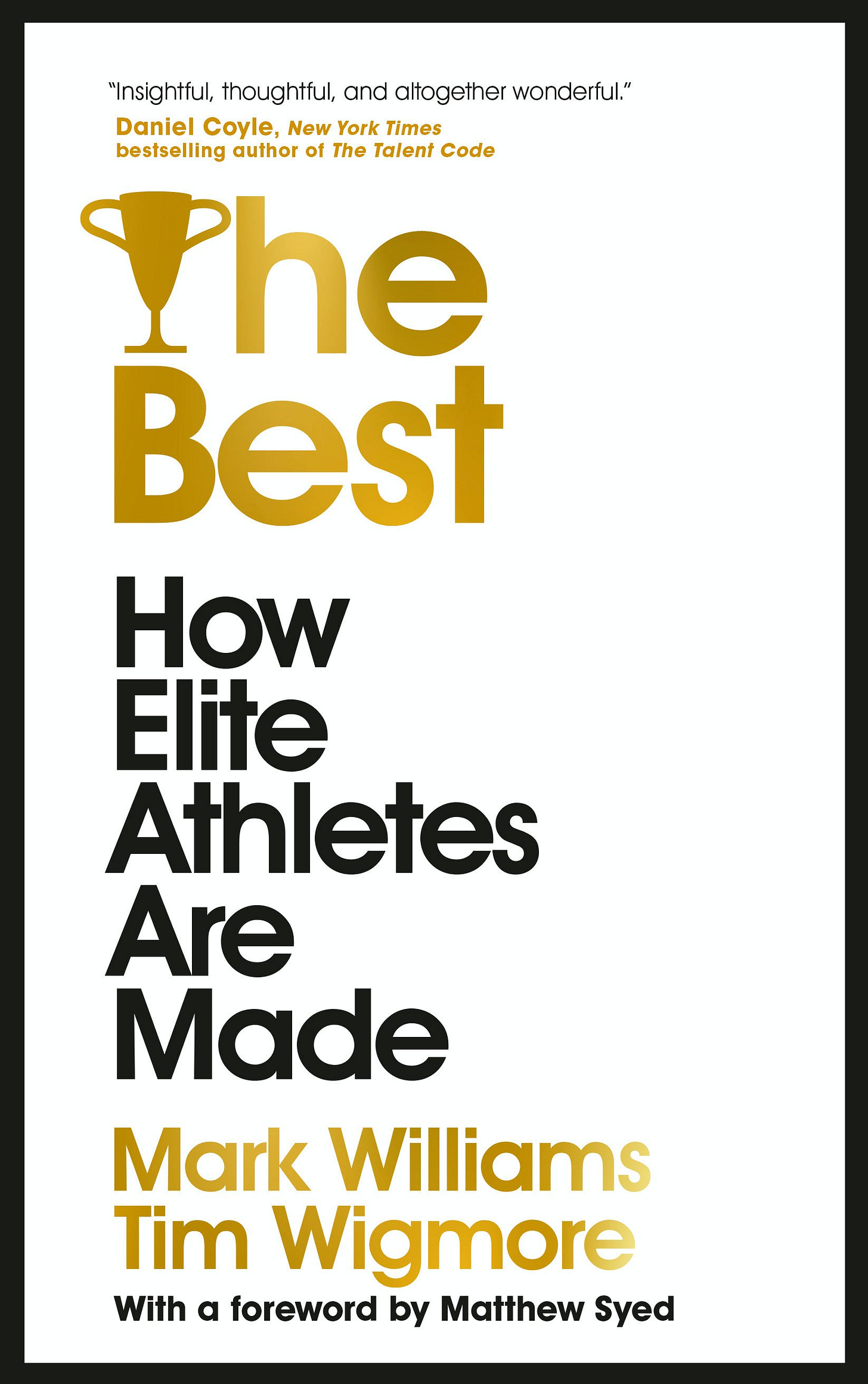Most Likely To Succeed: Janneman Malan
There are a number of things that can help show the future prospects of a young cricketer, some obvious and some more intangible.
Forecasting is not an easy thing, particularly if one has to forecast a player's future prospects in sports. This is why a lot of American teams fail more often than they are successful when it comes to scouting high school and college athletes. Yes, a good number of them end up playing at the top levels, but many more just fail to pan out.
There are far too many moving pieces when it comes to athletes.
However, if I really had to make a call on the current crop of young Proteas players coming through in white-ball cricket, I would start with Janneman Nieuwoudt Malan and peg him as most likely to succeed.
He has huge upside potential.
At the moment, Janneman's numbers at the international level provide a very small data set that cannot be relied on to provide an accurate assessment. He has played only four ODIs for the Proteas, three against Australia and one against Pakistan. Against Australia, Malan averages 76 at a strike rate of 71.56 (with scores of 0, 129* and 23.) In his only innings against Pakistan, he scored 70 runs.
In those four ODIs, Janneman has had a 52.91 non-boundary percentage. That speaks of an ability to rotate strike, which is complemented by a 10.53 boundary percentage. His strike rate against spin is 81.40.
His strike rate of 90+ against a full-strength Australia bowling attack suggests that he has a wide range of shots and attacks the ball. A trait you want in your ODI opener. However, what is even more impressive are his boundary percentage, non-boundary strike rate and strike rate against spin.
His T20 numbers are no different. He averages 22 at a strike rate of 129 in five T20Is played against Pakistan.
While it makes good reading, it provides little to no helpful information on his future prospects. So, I had to look elsewhere, I had to consider other factors that can influence his progression as an athlete and his career as a whole.
Younger sibling complex/The little sibling effect.
Did you know that, on average, elite athletes have at least 1.04 older siblings? (I don't know if I should put this disclaimer or not, but: this applies to athletes who took up a sport at an early age and kept at it into adulthood.)
Yes, younger siblings have a higher chance of making it as elite athletes compared to those that are only children or older siblings.
In their book, The Best: How Elite Athletes are Made, Mark Williams and Tim Wigmore cite a number of research articles, including one that looks at 33 sports in Canada and Australia. That study compared elite athletes — who had reached senior international competition — with near-elite athletes, who had reached the junior international or senior domestic level.
The conclusion? “Elite athletes were more likely to be later-born children.”
Williams and Wigmore give examples of players that include Serena Williams, Megan Rapinoe, Mia Hamm, Alex Morgan, AB DeVilliers, Michael Jordan and Andy Murray. All of whom had older siblings against whom they competed against.
In addition to DeVilliers, South African cricket also has Mark Boucher, Morne Morkel, Gary Kirsten and Graeme Pollock, among many others, all younger siblings who have had more successful top-flight careers than their older siblings.
Some of the possible reasons for this were outlined by Melissa J. Hopwood and her colleagues, Damian Farrow, Clare MacMahon, Joe Baker, in their paper "Sibling dynamics and sports expertise."
According to the paper, older siblings provide a solid platform for the development of technical and psychological skills. Often, older siblings provide younger siblings with role models to emulate in everything from work ethic to other non-sport activities. This helps model and develop character traits that can help them as athletes.
Sibling rivalry
Siblings do not just provide training partners, because as their sports participation develops more structure as they grow older, they also provide competition. And that competition is not just average peer competition, it is stronger and more mature competition, in a lot of cases. This is especially prevalent in cricket where older children, or bigger and stronger children, provide tougher competition as they bowl faster and bat harder than their smaller or younger counterparts.
Janneman is the youngest of three boys born into a cricketing family. His father was a groundsman, umpire, first change bowler and sponsor of the sport. His brothers Pieter and Andre are both cricketers. This is the competition he constantly had to overcome
And while the first-born child, (Pieter Malan in this case) is self-referencing, and has nobody to compare themselves against. Younger siblings are constantly interacting with somebody who is slightly faster, higher, stronger than them.
Sports psychologists report that this self-referencing drives older siblings to pay more attention to instruction. Their success is measured by the quality of feedback that they get (and that their parents get) from coaches and instructors. This state of affairs means that older children are often more motivated to learn and master skills from a technical angle.
Younger siblings, on the other hand, are motivated to win because the older siblings are their point of reference. To be considered good, they have to outperform their older siblings. They are born into a world with waiting competition. A lot of times, they find themselves comparing themselves (and being compared by their parents and community) to somebody who will beat them at everything. Somebody who had a head start in the discipline.
This angle of sibling rivalry creates a strong motivator within them to do better. Not just be better technically, but also performance-wise. They are driven not to just master the art, but to win. This drives them to often think and behave outside the box of conventional techniques.
Thinking outside the box
Daniel Memmert, an author and expert in skill development says that cognitive effort is an essential part of skill and mindset development. The more creative an athlete is, the higher their chances of developing their skills and ability, the more they are adaptable. And, even though coaching is essential to the proper development of solid technical ability, coaching does not always develop creativity. In fact, too much coaching and instruction can stifle creativity, as the athlete learns to do only what they are told and what is expected.
According to Memmert and a few other studies, younger siblings enjoy a lot of time of informal practice, compared to their older siblings who are often closely monitored by parents. This, in addition to their drive to win, makes them better resilient and adaptable athletes.
But, younger siblings do not just learn all these qualities on their own. By embracing their roles as big brothers and sisters, older siblings also positively impact the development of these qualities.
In the paper "Sibling interaction as a facilitator for talent development in sport," Robin D. Taylor cites the quality of feedback and emotional support from older siblings as other crucial factors that help in a younger sibling's talent development. Therefore, just by being supportive older siblings, they help in the shaping of an adaptable and resilient athlete.
Now, if you take all these intangibles, these psychological factors around Janneman and add them to qualities we can measure, like his skill which passes the eye test, his strike rate and average, then...
Do you think this content is worthy of your support?
If you think so, you can Buy Me A Coffee. Alternatively, you can buy several coffees if you like (simply change the number of coffees to your preferred amount). All coffees you buy will be greatly appreciated.
If not, worry not. I am consistently working to improve the quality of both the content and delivery. In the meantime, do you think it’s worthwhile for you to contribute to that growth and development by buying me a coffee?
Another way to support: please encourage anyone you think may be interested to subscribe to this newsletter, the blog or both.






